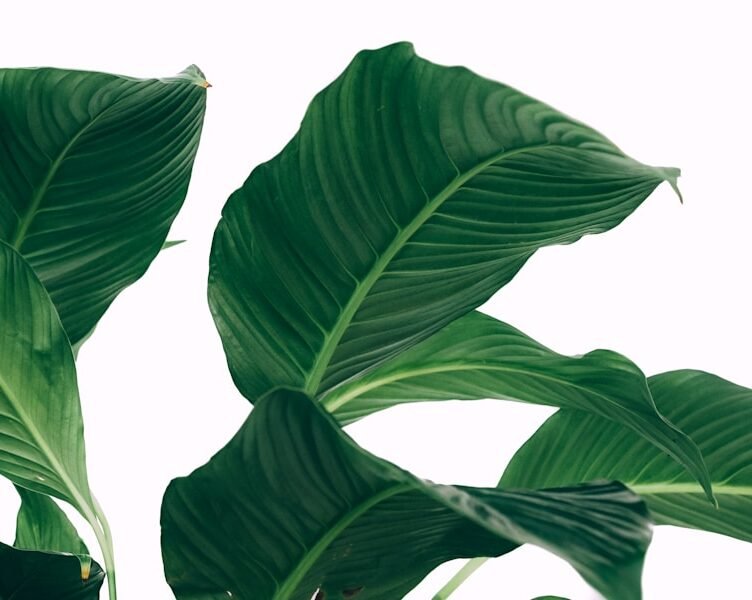Cultivating garlic indoors can be a fulfilling experience, but it also presents several challenges. One of the primary obstacles faced by indoor garlic growers is poor soil drainage, which can lead to waterlogged roots and root rot. Garlic plants require well-drained soil to thrive, and inadequate drainage can have detrimental effects on their growth.
Another common issue is insufficient sunlight, as garlic plants necessitate at least six hours of direct sunlight daily to develop properly. Inadequate sunlight can result in leggy, weak plants with poorly developed bulbs. In addition to these challenges, indoor garlic growers may also encounter problems with pests and diseases.
Common pests that can infest garlic plants include aphids, spider mites, and thrips, which can cause damage to leaves and bulbs. Furthermore, diseases such as white rot, rust, and fusarium can also affect indoor garlic plants, leading to stunted growth and poor bulb development. Recognizing these common problems is essential for effectively identifying and addressing issues in indoor garlic cultivation.
Key Takeaways
- Proper watering and well-draining soil are crucial for successful indoor garlic cultivation.
- Keep an eye out for pests and diseases such as aphids, spider mites, and white rot, and treat them promptly.
- Nutrient deficiencies can be addressed through the use of organic fertilizers and amendments.
- Environmental factors like temperature, humidity, and light levels should be carefully managed for optimal garlic growth.
- Overwatering and underwatering can lead to root rot and stunted growth, so it’s important to find the right balance.
Identifying and Treating Pests and Diseases in Indoor Garlic Plants
Aphids and Spider Mites: Common Pests of Indoor Garlic
Aphids are one of the most common pests that affect garlic plants. These small insects feed on the sap of the plant, causing the leaves to curl and yellow. To treat aphids, you can use insecticidal soap or neem oil to suffocate and kill them. Spider mites are another common pest that can infest indoor garlic plants. These tiny pests feed on the plant’s sap, causing stippling and webbing on the leaves. To treat spider mites, you can use a strong blast of water to dislodge them from the plant, or apply insecticidal soap.
Fungal Diseases: White Rot and Rust
In addition to pests, indoor garlic plants can also be affected by various diseases. White rot is a fungal disease that affects the roots and bulbs of garlic plants, causing them to rot and decay. To treat white rot, it is important to remove and destroy any infected plants, and avoid planting garlic in the same soil for several years. Rust is another common disease that affects garlic plants, causing orange or yellow spots on the leaves. To treat rust, you can apply a fungicide to the affected plants.
Effective Management of Pests and Diseases
By identifying and treating pests and diseases early on, indoor garlic growers can effectively manage these common issues and ensure the health and vitality of their plants. Regular monitoring and prompt action can make all the difference in preventing the spread of these problems and enjoying a successful harvest.
Addressing Nutrient Deficiencies in Indoor Garlic Growing
Nutrient deficiencies can also be a common issue in indoor garlic growing. One of the most common nutrient deficiencies in garlic plants is nitrogen deficiency. This can cause the leaves to turn yellow and stunt the growth of the plant.
To address nitrogen deficiency, you can apply a nitrogen-rich fertilizer to the soil or use a foliar spray to provide the plant with an immediate source of nitrogen. Another common nutrient deficiency in garlic plants is potassium deficiency. This can cause the leaves to develop brown spots and the bulbs to be small and underdeveloped.
To address potassium deficiency, you can apply a potassium-rich fertilizer to the soil or use a foliar spray to provide the plant with an immediate source of potassium. In addition to nitrogen and potassium deficiencies, indoor garlic plants may also experience deficiencies in other essential nutrients such as phosphorus, magnesium, and calcium. Phosphorus deficiency can cause the leaves to turn dark green or purple, while magnesium deficiency can cause yellowing between the veins of the leaves.
Calcium deficiency can lead to blossom end rot in the bulbs. To address these deficiencies, it is important to provide the plants with a balanced fertilizer that contains all essential nutrients, or use specific fertilizers that target the deficient nutrients. By addressing nutrient deficiencies in indoor garlic growing, growers can ensure that their plants have all the essential nutrients they need to thrive.
Managing Environmental Factors for Successful Indoor Garlic Cultivation
| Common Issues | Troubleshooting |
|---|---|
| Poor Growth | Check soil moisture and adjust watering schedule |
| Yellowing Leaves | Inspect for pests and apply organic insecticide if necessary |
| Mold or Fungus | Improve air circulation and avoid overwatering |
| Stunted Bulb Growth | Ensure proper soil drainage and provide adequate sunlight |
Environmental factors play a crucial role in the successful cultivation of indoor garlic plants. One of the most important environmental factors to consider is temperature. Garlic plants prefer cool temperatures between 55-77°F (13-25°C) during their growing period.
If the temperature is too high, it can cause the plants to bolt prematurely and produce small bulbs. On the other hand, if the temperature is too low, it can slow down the growth of the plants and delay bulb development. It is important to maintain a consistent temperature within the optimal range to ensure successful indoor garlic cultivation.
Another important environmental factor to consider is humidity. Garlic plants prefer moderate humidity levels between 50-70%. High humidity can promote fungal diseases such as white rot, while low humidity can cause the leaves to wilt and dry out.
It is important to maintain proper air circulation and humidity levels in the growing area to prevent these issues from occurring. Additionally, indoor garlic growers should also consider air quality and ventilation in their growing space to ensure that the plants have access to fresh air and are not exposed to any pollutants or contaminants. By managing these environmental factors effectively, indoor garlic growers can create an optimal growing environment for their plants and promote healthy growth and development.
Dealing with Overwatering and Underwatering Issues in Indoor Garlic Plants
Overwatering and underwatering are common issues that indoor garlic growers may encounter. Overwatering can lead to waterlogged soil, which can suffocate the roots and lead to root rot. It can also promote fungal diseases such as white rot and fusarium.
On the other hand, underwatering can cause the plants to become stressed and wilted, leading to stunted growth and poor bulb development. To prevent overwatering, it is important to ensure that the soil has good drainage and only water the plants when the top inch of soil is dry. To prevent underwatering, it is important to monitor the moisture levels in the soil regularly and water the plants when needed.
In addition to proper watering practices, it is also important to consider the type of water used for irrigation. Tap water may contain high levels of chlorine or other chemicals that can be harmful to garlic plants. It is recommended to use filtered or distilled water for irrigation to prevent any potential damage to the plants.
By effectively managing watering practices and using quality water for irrigation, indoor garlic growers can prevent overwatering and underwatering issues and promote healthy growth in their plants.
Preventing and Managing Fungal and Bacterial Infections in Indoor Garlic
White Rot: A Common Fungal Infection
One of the most common fungal infections that affect garlic plants is white rot. This disease causes the roots and bulbs of the plant to rot and decay, ultimately leading to plant death.
Prevention and Management of White Rot
To prevent white rot, it is important to practice crop rotation and avoid planting garlic in the same soil for several years. Additionally, it is important to maintain proper air circulation and humidity levels in the growing area to prevent the spread of fungal spores.
Bacterial Infections: Another Threat to Indoor Garlic Plants
Bacterial infections such as bacterial leaf blight can also affect indoor garlic plants, causing brown spots on the leaves and stunted growth. To manage bacterial infections, it is important to remove and destroy any infected plants to prevent the spread of the disease. Additionally, it is important to practice good sanitation practices such as cleaning tools and equipment regularly to prevent any potential contamination.
Protecting Indoor Garlic Plants from Infections
By preventing and managing fungal and bacterial infections effectively, indoor garlic growers can protect their plants from these common issues and promote healthy growth.
Troubleshooting Common Growth and Development Issues in Indoor Garlic Plants
In addition to pests, diseases, nutrient deficiencies, environmental factors, and watering issues, indoor garlic growers may also encounter common growth and development issues in their plants. One of these issues is premature bolting, which occurs when the plant sends up a flower stalk before bulb development is complete. Premature bolting can result from stress factors such as high temperatures or inadequate sunlight.
To prevent premature bolting, it is important to provide the plants with optimal growing conditions and ensure that they receive adequate sunlight and consistent temperatures. Another common growth issue in indoor garlic plants is small bulb size. This can be caused by a variety of factors such as inadequate nutrients, overcrowding, or insufficient sunlight.
To address small bulb size, it is important to provide the plants with a balanced fertilizer that contains all essential nutrients, ensure proper spacing between plants, and provide adequate sunlight for healthy bulb development. In conclusion, troubleshooting common issues in indoor garlic growing requires a thorough understanding of potential problems such as poor soil drainage, inadequate sunlight, pests, diseases, nutrient deficiencies, environmental factors, watering issues, fungal and bacterial infections, as well as growth and development issues. By identifying these issues early on and implementing effective management strategies such as proper watering practices, nutrient supplementation, pest control measures, environmental management, disease prevention techniques, and addressing growth issues promptly, indoor garlic growers can ensure successful cultivation of healthy garlic plants indoors.
FAQs
What are some common issues in indoor garlic growing?
Some common issues in indoor garlic growing include yellowing leaves, stunted growth, fungal diseases, and inadequate bulb development.
How can I prevent yellowing leaves in indoor garlic plants?
Yellowing leaves in indoor garlic plants can be prevented by ensuring proper watering, providing adequate sunlight, and avoiding over-fertilization.
What are some tips for preventing fungal diseases in indoor garlic plants?
To prevent fungal diseases in indoor garlic plants, it is important to provide good air circulation, avoid overwatering, and use disease-resistant garlic varieties.
How can I promote adequate bulb development in indoor garlic plants?
Adequate bulb development in indoor garlic plants can be promoted by providing the right temperature and humidity levels, ensuring proper soil drainage, and avoiding overcrowding of plants.
What should I do if I notice stunted growth in my indoor garlic plants?
If you notice stunted growth in your indoor garlic plants, it is important to check for proper watering, adequate sunlight, and nutrient deficiencies. Adjusting these factors can help promote healthy growth.







2 Comments